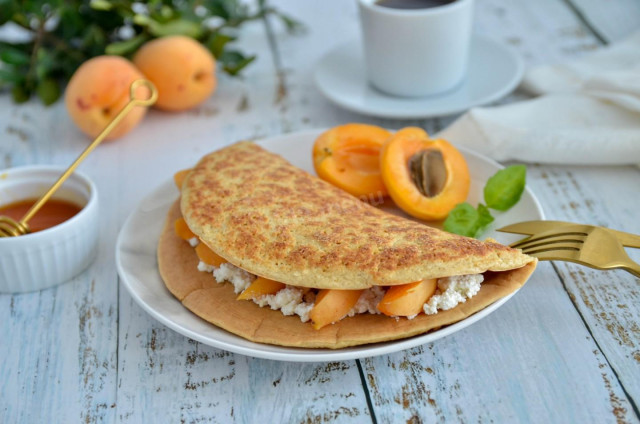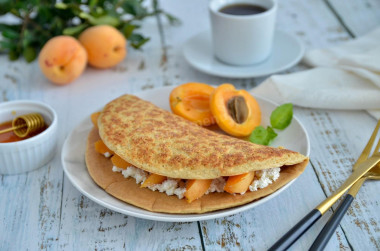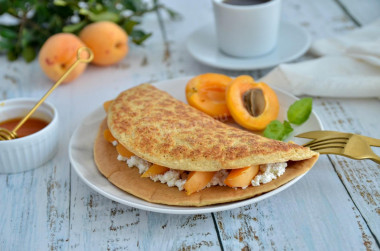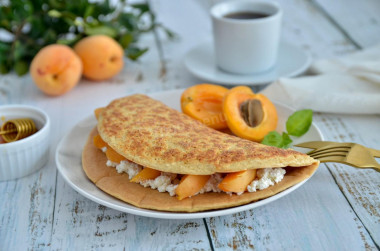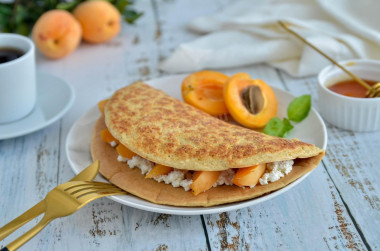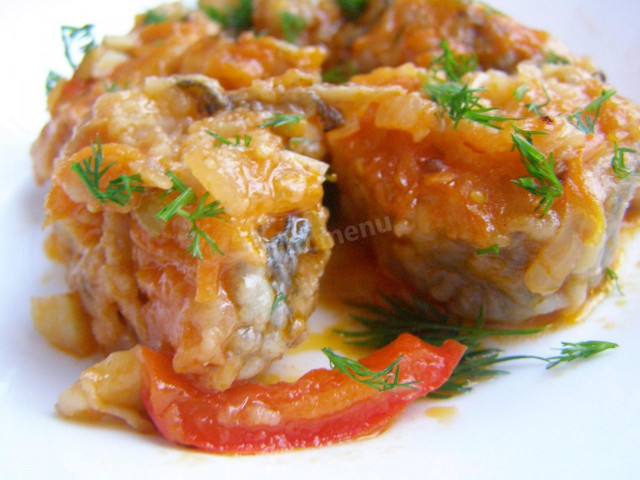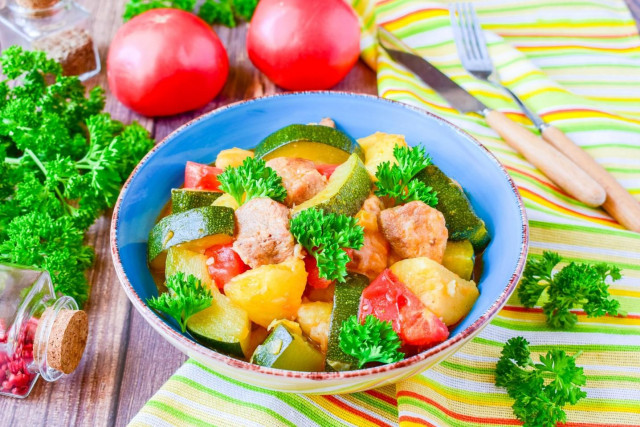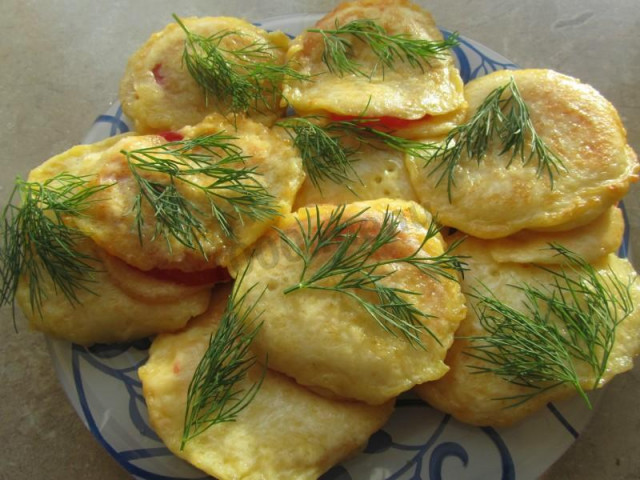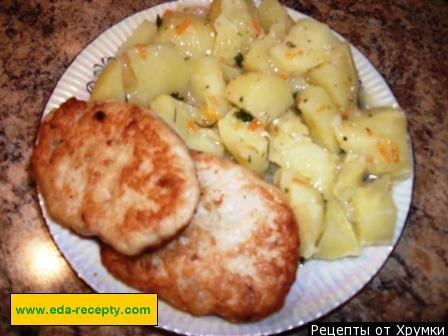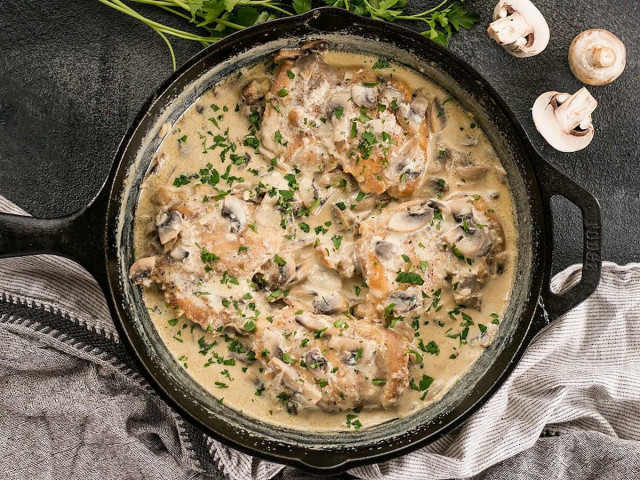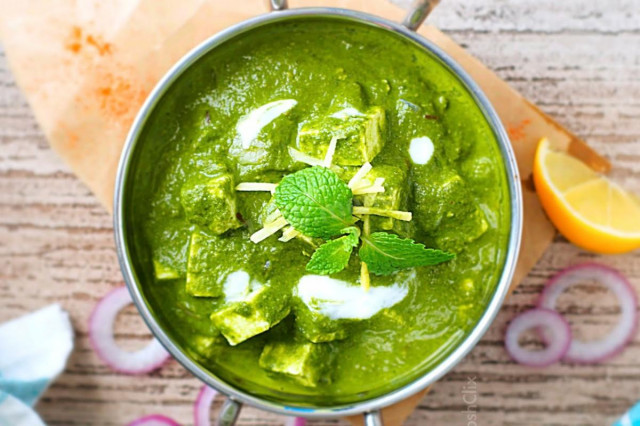Composition / ingredients
Step-by-step cooking
Step 1:
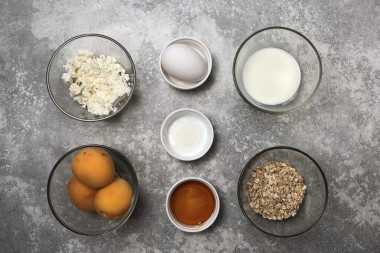
Prepare the products for cooking oatmeal. It is better to take the flakes after a long cooking, they are more useful. I offer a sweet version of the filling - with cottage cheese, honey and fruit.
Step 2:
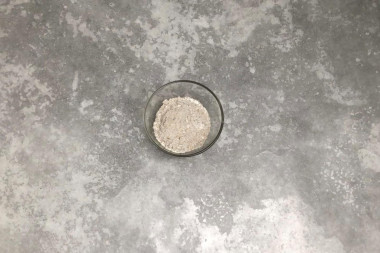
Grind the flakes to flour. The most convenient way to do this is with a coffee grinder. But you can also use other kitchen gadgets - a blender or a chopper. You can not grind the flakes, leave them as they are, then the structure of the pancake will be slightly different, more crispy. I usually do it with whole flakes, but this time I decided to try out the option with flour. Delicious and so, and so, decide for yourself.
Step 3:
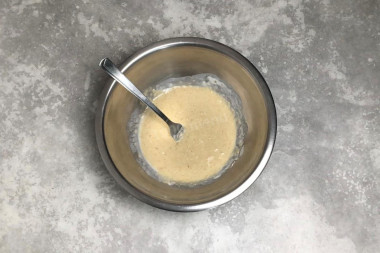
In a bowl, break an egg, beat it lightly with a fork. Add the ground flakes, kefir and baking powder. Mix everything until smooth. I would advise adding another drop of salt, especially if the filling is sweet. Unleavened pancake is good for salty filling. If you use whole flakes, then leave the dough to stand ready for about 20 minutes. The flakes will swell and the pancake will taste better.
Step 4:
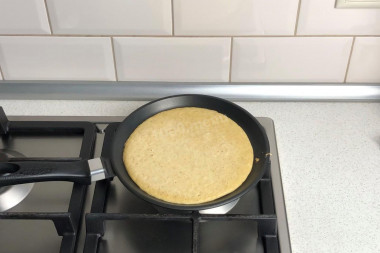
Preheat the frying pan. It is more convenient to fry a pancake in a non-stick frying pan, then you will not need a drop of oil. If you have a regular frying pan, then lubricate it with a small amount of vegetable oil. Pour the batter into the pan. Level it with a spatula. Make the fire small.
Step 5:
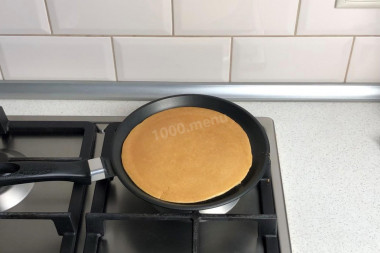
Fry the pancake on one side, then turn it over on the other. Since the pancake contains only oatmeal, it is very brittle. Be careful when turning over. But even if the pancake breaks, it will not affect its taste in any way.
Step 6:
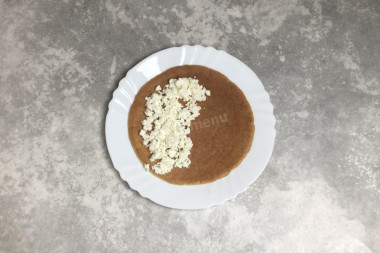
Remove the finished pancake on a plate. Put the filling on one side. I have this cottage cheese.
Step 7:
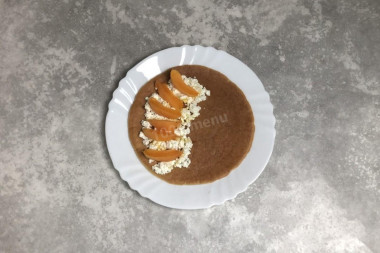
I poured honey on top of the cottage cheese and put pieces of apricots on it.
Step 8:
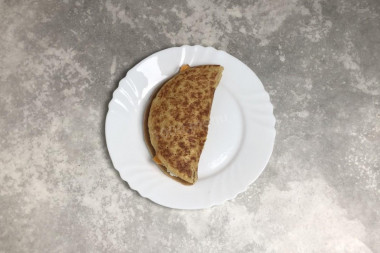
Carefully fold the pancake in half, covering the filling. Serve immediately. Pancake tastes best in a warm state.
How do I know if an egg is fresh? Break it into a separate container. First of all, there should be no unpleasant smell. The protein of fresh eggs will be transparent and clean. The yolk should not spread and will be shiny, convex, homogeneous.
Be sure to wash the eggs before use, as even the seemingly clean shell may contain harmful bacteria. It is best to use food detergents and a brush.
I often cook oatmeal. It's very fast, delicious and healthy. More often I use whole flakes, but now I will cook it with flour - the pancake turns out to be more tender and turns over easier.
You can experiment with fillings to your liking.
Berries, fruits, bananas, nuts, dried fruits are perfect for sweet fillings.
Cottage cheese, vegetables, avocado, meat, mushrooms, ham - the salty ones have even more options.
Caloric content of the products possible in the composition of the dish
- Chicken egg - 157 kcal/100g
- Egg white - 45 kcal/100g
- Egg powder - 542 kcal/100g
- Egg yolk - 352 kcal/100g
- Ostrich egg - 118 kcal/100g
- Honey - 400 kcal/100g
- Cottage cheese of 40% fat content - 466 kcal/100g
- Cottage cheese of 20% fat content - 233 kcal/100g
- Cottage cheese of 18% fat content - 226 kcal/100g
- Cottage cheese of 10% fat content - 156 kcal/100g
- Low-fat cottage cheese - 75 kcal/100g
- Cottage cheese with sour cream - 260 kcal/100g
- Fruit cottage cheese - 147 kcal/100g
- Soft dietary cottage cheese - 170 kcal/100g
- Cottage cheese "vitalinia" - 64 kcal/100g
- Cottage cheese "morning" ( "danone") without sugar - 91 kcal/100g
- Cottage cheese - 156 kcal/100g
- Apricots - 46 kcal/100g
- Canned apricots - 50 kcal/100g
- Kefir fat - 62 kcal/100g
- Kefir of 1% fat content - 38 kcal/100g
- Low-fat kefir - 30 kcal/100g
- Kefir "doctor beefy" 1,8% fat content - 45 kcal/100g
- Kefir 2.5% fat content - 53 kcal/100g
- Oat flakes - 305 kcal/100g
- Raw Hercules - 390 kcal/100g
- Baking powder - 79 kcal/100g

